#11 August 1677
Text

















The Rostock fire of 1677 started on August 11, 1677.
#Rostocker Stadtbrand#Nikolaikirche#Kuhtor#Ständehaus Rostock#Stadtmauer#town fortification#Rostock fire of 1677#started#11 August 1677#anniversary#Germany#Rostock#Mecklenburg-Vorpommern#Deutschland#town hall#church#original photography#summer 2020#Europe#travel#vacation#cityscape#architecture#tourist attraction#landmark
1 note
·
View note
Text

Jacob Herreyns I - Scenes from the Life of Christ - Marriage at Cana -
Jacob Herreyns or Jacob Herreyns ( Antwerp, baptized on 23 December 1643 – Antwerp, 1 January 1732) was a Flemish painter, printmaker and designer of tapestries. He worked in Antwerp where he painted many altarpieces. He was a known staffage painter who added the figures in the landscapes of other artists. As a printmaker, he produced mostly prints of mythological subjects. He held also the position of ‘muntmeester’ (mint master) of Brabant.
Herreyns was born in Antwerp as son of Daniël Herreyns and Maria van de Dorp and was baptized in the cathedral of Antwerp on 23 December 1643. His father was a printmaker. He was registered as a pupil of the obscure painter Norbert van Herp the Elder in the Antwerp Guild of St. Luke in the Guild year 1671–1672. Van Herp was a still life painter and the son of the better known Willem van Herp. In the Guild year 1671-1672 Herreyns was admitted as a master of the Guild. In the Guild year 1695-1696 Jan-Baptist Jacops and Jan Ritsaert Musketieer were registered as his pupils.
He married Maria-Catharina Smout on 13 December 1677. His wife was a sister of the painters Lucas Smout the Younger and Dominicus Smout. Through this marriage he became a brother in law of the battle painter Gonzales Franciscus Casteels who married his wife's sister. Herreyns and his wife had 10 children: Daniel (II) (25 September 1678), Maria-Catharina (7 May 1681), Isabella-Clara (* 30 July 1683), Anna-Theresia (24 November 1685), Jacob (II) (25 August 1687), Susanna-Maria (11 December 1689), Joanna (5 August 1692), Jan-Baptist (28 November 1695), Francis-Gonzales ( 15 October 1699) and Anna-Elisabeth (*12 October 1701). Jacob (II) became a painter and his grandson was the painter Willem Jacob Herreyns who played an important role in Flemish art and art education at the end of the 18th century. Daniel (II) also became a painter.
In 1709, Herreyns and Abraham Genoels were commissioned to fit out and decorate the former tapestry as a full-fledged theatre. Herreyns and his wife made a will on 14 February 1730. On 29 December 1731 Herreyns changed his will as he had become a widower and his sons Daniel II and Jacobus II were already deceased by that time.
He was buried on 1 January 1731 in the Saint Andrew Church, in front of the altar of the mint masters of Brabant, of whom he had been a lifelong member.
4 notes
·
View notes
Text
Christian Hoffmann von Hoffmannswaldau
Christian Hoffmann von Hoffmannswaldau (auch: Hofmann von Hofmannswaldau[1], getauft[2] 25. Dezember 1616 in Breslau, Fürstentum Breslau; † 18. April 1679 ebenda) war ein schlesischer Lyriker und Epigrammatiker, Bürgermeister der Stadt Breslau, Landeshauptmann des Fürstentums Breslau und Direktor des Burglehns Namslau. Er gilt als der führende Vertreter der Zweiten Schlesischen (Dichter-)Schule und als Begründer des „galanten Stils“ in der deutschsprachigen Poesie. Hoffmann gehörte einer „jungen“ Breslauer Patrizierfamilie an, die erst im 16. Jahrhundert, ursprünglich aus Neisse stammend, über Glatz nach Breslau gekommen war. Stammvater der Familie war George Hoffmann († 1583), Pfarrer zu Wünschelburg, Assessor und Senior des Konsistoriums der Grafschaft Glatz. Christian Hoffmann von Hoffmannswaldau war der Sohn des Johannes Hoffmann (gräzisiert: Auleander) (1575–1652), der aus Wünschelburg nach Breslau gezogen war, und dessen erster Ehefrau Anna Nagel (1591–1621) aus Breslau. Der Vater war als Beamter am Kriegszahlamt in Wien am 11. September 1612 in Prag in den erbländisch-österreichischen Adelsstand erhoben worden und erhielt am 13. Juli 1629 in Wien als Kaiserlicher Rat und Kammersekretär zu Breslau die Reichsadelsbestätigung mit dem Prädikat „von Hoffmannswaldau“. Nach dem Tod der ersten Ehefrau heiratete Vater Johannes in zweiter Ehe am 25. Oktober 1622 Magdalene Hogel († 1627) und nach deren Tod in dritter Ehe Maria von Artzat (1588–1662) aus Breslau. Schon Vater Hoffmann verfasste lateinische Verse. Nach dem Besuch des Breslauer Elisabeth-Gymnasiums wechselte Hoffmann 1636 auf das Akademische Gymnasium Danzig. Dort traf er sich häufig mit Martin Opitz, der Hoffmanns dichterische Arbeit nachhaltig beeinflussen sollte. Am 9. Oktober 1638 wurde er an der Universität Leiden (Niederlande) immatrikuliert und studierte Rechtswissenschaften. Auf einer längeren, damals üblichen Bildungsreise als Begleiter eines Fürstensohns Frémonville lernte er in Amsterdam Andreas Gryphius kennen. Dann ging er nach England, wo er die Sprache erlernte, und anschließend nach Frankreich, wo er mit bedeutenden Gelehrten wie Hugo Grotius (1583–1645), François Auguste de Thou (1606–1642), Denis Pétau (auch Dionysius Petavius, 1583–1652) und anderen verkehrte. In Italien hielt er sich längere Zeit in Genua, Pisa und Siena auf, reiste weiter nach Rom und kehrte über Florenz, Bologna, Venedig und Wien im Jahr 1642 wieder nach Breslau zurück. Hoffmann heiratete auf väterlichen Druck am 16. Februar 1643 Marie (getauft 3. Juli 1626 in Breslau; † 19. Oktober 1692 wohl ebenda), die Tochter des Simon Webersky, der am 1. September 1660 mit dem Prädikat von Webersickh in den Adelsstand erhoben wurde. Aus der Ehe entstammten die Söhne Johann (Hans) Christian (1644–1724) und Georg Moritz. In Breslau betätigte sich Hoffmann als erfolgreicher Kaufmann, kam zu großem Vermögen und wurde Gutsbesitzer von Arnoldsmühle, Belkau und Schlaupe im Fürstentum Breslau sowie Kutscheborwitz im Fürstentum Wohlau.
Im Jahr 1647, kurz vor Ende des Dreißigjährigen Krieges, wurde Hoffmann besonders wegen seiner weltmännischen Bildung und breiten Kenntnis der europäischen Literatur, obwohl er nicht den sonst im Rat vertretenen alten Kaufmanns- und Patrizierfamilien angehörte, zum Ratsschöffen gewählt. Er gehörte dem Breslauer Rat ohne Unterbrechung 32 Jahre lang bis zu seinem Tod im Jahr 1679 an – im Wechsel als Schöffe oder Konsul. 1670 und 1674 wurde er Schöffenpräses, 1671–1673, 1675 und 1676 zum zweiten Konsul und damit stellvertretender Ratspräses und Landeshauptmann. Von 1677 bis zu seinem Tode war er Ratspräses und damit Bürgermeister der Stadt Breslau sowie Landeshauptmann des Fürstentums Breslau. Während seiner Amtszeit reiste er wegen konfessioneller Konflikte 1657 an den Kaiserhof nach Wien, wo er sehr erfolgreich war, was ihm die Ernennung zum Kaiserlichen Rat durch Kaiser Leopold I. eintrug. Auch in den Jahren 1660, 1669 und 1670 hielt er sich zu Verhandlungen in Wien auf. Hoffmann genoss einen ausgezeichneten Ruf in Breslau und trug durch Veranstaltungen in seinem Haus zum kulturellen Leben seiner Heimatstadt bei. Bedingt durch spätere berufliche und diplomatische Verpflichtungen als Breslauer Ratsmitglied verfasste er ab 1647 nur noch wenige Werke. Die meisten seiner literarischen Arbeiten waren in den 1640er Jahren entstanden. Hoffmann schrieb Sinnsprüche und verfasste eine große Zahl religiöser und weltlicher Lieder, hinterließ aber auch einige umfangreiche Werke, darunter vor allem: Der getreue Schäffer (1652), eine Übersetzung von Giovanni Battista Guarinis Il pastor fido, und die Helden-Briefe von 1664, einen fiktiven Briefwechsel, der von Ovids Heroiden inspiriert war.Besinnliche Themen und Heldengestalten spielen in seiner Dichtung eine große Rolle, doch auch ein „reisender Cupido“ oder die Venus zwischen Triumphwagen und hübschem Mädchengesicht. Er bevorzugte die Jamben (z. B.: „So soll der purpur deiner lippen / Itzt meiner freyheit bahre seyn?“); sein Stil ist durch die Häufung sprachlicher Bilder gekennzeichnet. Hoffmann war schon zu Lebzeiten ein berühmter Dichter, veröffentlichte seine Werke aber selbst nicht. Seine Verse wurden unberechtigt gedruckt, so zum Beispiel die Grab-Schrifften 1662; sie gingen von Hand zu Hand, wurden zudem immer wieder abgeschrieben und erreichten sogar die Herrscherhöfe. Da seine Verse auch entstellt erschienen, sah Hoffmann sich 1679 veranlasst, selbst eine Auswahl seiner Werke unter dem Titel: „Deutsche Übersetzungen und Getichte“ für den Druck vorzubereiten, deren Erscheinen er aber nicht mehr erlebte. Was nach seinem Tod in der autorisierten Ausgabe der Deutschen Übersetzungen und Gedichte an die Öffentlichkeit kam, umfasste nur etwa die Hälfte seines Gesamtwerks und erschien in bereits bearbeiteter Form. Dennoch begründete diese Ausgabe einen neuen Stil in der deutschen Literatur, die sogenannte „galante Epoche“. In einer postumen Lob-Rede des Breslauer Freundes Daniel Caspar von Lohensteins auf Christian Hoffmann von Hoffmannswaldau wird dessen Dichtung als von Italien inspiriert gekennzeichnet und behauptet, dass Opitz ebendieses „Welsche“ von Hoffmann übernommen habe.
Der Ruhm des Dichters erreichte einen Höhepunkt, als Benjamin Neukirch im Jahre 1695 die erste große deutsche Anthologie unter dem Titel Herrn von Hoffmannswaldau und anderer Deutschen ... Gedichte veröffentlichte. Die Popularität seiner Dichtung führte auch dazu, dass ihm von Unbekannten verfasste laszive und obszöne Verse zugeschrieben wurden. So wurde aus dem viel gerühmten Hoffmann ein geschmähter Dichter. Unbestritten blieb aber die Bedeutung seiner Formkunst.
2 notes
·
View notes
Photo

Barbara Strozzi (6 August 1619 – 11 November 1677) was an Italian singer and composer of the Baroque Period. During her lifetime, Strozzi published eight volumes of her own music, having more music in print than any other composer of the era. This was made possible without any support from the Church or consistent patronage of the nobility.
Strozzi's life and career has been overshadowed by the claims of her being a courtesan, which cannot be completely confirmed as at the time female music making was often assumed to be an intellectual asset of a courtesan.
21 notes
·
View notes
Text
23rd King of Portugal (3rd of Bragança Dynasty):King Pedro II of Portugal, “The Pacific”

Reign: 12 September 1683 – 9 December 1706
Inauguration: 27 January 1668
Predecessor: Afonso VI
Pedro II (26 April 1648 inn Lisbon – 9 December 1706 in Alcântara), nicknamed "the Pacific", was the King of Portugal from 1683 until his death, previously serving as regent for his brother Afonso VI from 1668 until his own accession. He was the fifth and last child of João IV and Luisa de Guzmán.

Third son of King João IV and Queen Luisa, he was created Duke of Beja and Lord of the House of Infantado.
Following his father's death, his mother became regent for the new king Afonso VI, Pedro's elder, partially paralyzed, and mentally unstable brother. In 1662 Afonso put away his mother and assumed control of the state. In January 1668, shortly before Spanish recognition of Portugal's restoration of independence, Pedro acquired political ascendancy over his brother and was appointed regent, banishing Afonso to the Azores and, later, Sintra where he died in 1683. Pedro thereupon inherited the throne.
Pedro not only inherited his brother's throne but also wed his former spouse, Queen Marie-Françoise of Savoy (1646–1683). They had one daughter, Isabel Luísa, Princess of Beira (1669–90), who was heir presumptive.
Rule (1668–1706)

Pedro consolidated Portugal's independence with the signing of the Treaty of Lisbon in 1668, putting the Portuguese Restoration War, that began in 1640, to an end. He formed an alliance with England and had its decisive support based on marriage clauses that united Charles II of England with his sister Catherine of Bragança in 1661. Portugal ceded Tangier and Bombay as a dowry, and compromised to transfer to the English the majority of the places recovered from the Dutch, to share in half the commerce of cinnamon, to install English families with the same privileges of the Portuguese families in Goa, Cochin, Diu, Bahia, Pernambuco and Rio de Janeiro. In exchange, England would give Lisbon military support, protecting Portuguese shipments in the Mediterranean and the coasts of Lisbon and Porto.
The English alliance was decisive in the consolidation of Pedro's leadership. He centralized the monarchy's power and dissolved the excessive strength the nobility had gained after the death of João IV in 1656.
His long tenure was one of important accomplishments. In 1671 he conceded freedom of commerce to the English residing in Portugal and began the establishment of textile manufactures. Isabel Luísa was proclaimed heir presumptive to the throne at the Portuguese Cortes of 1674, Pedro promulgating a letter «on the regencies and tutorships of Kings» to better found the rights of his daughter.
In 1674 his main concern was to improve the defenses of the realm, asking for contributions from the Junta dos Três Estados to the keeping of border garrisons, its paraphernalia and indispensable works in castles and forts. The Cortes didn't attend to totality of his request, but the great apprehension was in the coastal defense. «The shipments from India and Brazil were the main object of greed», says Veríssimo Serrão, «History of Portugal», Volume V, page 213, so that «the Crown was obliged to arm a fleet of 11 boats. (...) The squadron left the Tejo on 21 July 1675, under the command of Pedro Jacques de Magalhães. (...) But the results of such a costly undertaking were none.»
There was a legal impediment to the marriage of his daughter with her cousin, the Duke of Savoy. The so-called «Law of the Cortes of Lamego» prevented the marriage of an heiress with a foreign prince. This alleged document became fundamental law of the Realm in 1640. The Cortes, called on 1 November 1679, proceeded with the derogation. By then the ambassador of Savoy, the Marquis of Ornano, had come to Lisbon to celebrate the marriage by proxy. But it would all turn ineffective to the extent that the embassy of the Duke of Cadaval, sent to Turin in May 1682, did not reach or did not finish the project, by pressures, perhaps, of Louis XIV on the dynasty of Savoy.
In 1683 King Afonso VI and Queen Maria Francisca died. In the court there was a strong «French party», headed by the Duke of Cadaval, the then Count of Vila Maior and by the Viscount of Ponte de Lima, but others favored a closer alliance with Spain. By marrying again, Pedro II chose the sister of the Queen of Spain, daughter of Philipp Wilhelm, Elector Palatine.

The new queen, Maria Sophia of Neuburg, never influenced political life, maintaining a low profile. The couple had eight children, including the younger João who succeeded his father in 1706 as King João V of Portugal.
Pedro initially supported France and Spain in the War of Spanish Succession (1701–1714), but on 16 May 1703, Portugal and England signed the Methuen Treaty. This trade accord granted mutual commercial privileges for Portuguese wine and English textile traders and would later give England significant influence in the Portuguese economy. This was followed in December 1703 by a military alliance between Portugal, Austria and England for an invasion of Spain. Portuguese and Allied forces, under the command of the Marquis of Minas, captured Madrid in 1706, during the campaign which ended in the Allied defeat at Almansa.

Pedro obtained papal approval for the elevation of the Bahia bishopric to the category of archbishopric, and the creation of the bishoprics of Olinda and Rio de Janeiro in 1676. In 1677 was created the bishopric of Maranhão, directly subordinated to the archbishopric of Lisbon. In 1686, via decree from the Missionary Regiment, the privileges of the Jesuits in the interior of the Northern region were restricted. There was, however, resistance to the reordering process of the colonial administration, such as the Beckman revolt of 1684 that sublevated the Maranhão colonists against the monopoly of the General Company of Commerce of Grão-Pará and Maranhão and the rise of the Tapuias in the 1680s in various regions of the Northeast.
The discovery of gold in the interior of Caetés, Minas Gerais, in the end of the 17th century, began an age of economic prosperity and administrative changes, with the creation in 1693 of the Captaincy of São Paulo and Minas Gerais, and the Intendancy of Minas Gerais in 1702. It also dates from the period the destruction of the Quilombo dos Palmares, Alagoas, in 1695.
The King fixated the basis of his Brazilian policy in two main points: the research of precious metals and stones and the expansion of the borders of the colony to the banks of the Río de la Plata. He sent the Viscount of Barbacena to Brazil with instructions to encourage the mining explorations. The reputation of the Paulistas was such that, urged by Barbacena, Pedro wrote to twelve frontiersmen Piratinganos, and provided them with the "incomparable honor" of a direct interpellation, summoning them to place their employment at the royal service.
Under his reign was created the Casa da Moeda do Brasil, inaugurated on 8 March 1694. The King ceded his seigniorage rights, tribute owed to him, in favor of the better functioning of this institution, that coined the first Brazilian coins for usage within the colony. These coins of 2,000 and 4,000 réis in gold, and 640, 320, 160, 80, 40 and 20 réis in silver amplified and diversified the circulating midst in Brazil.
By the end of Pedro's reign, there were two big problems in Brazil: the dispute over the Colónia do Sacramento that, even though since 1680 recognized as Portuguese territory, was occupied by the Spanish in 1705, and the first conflicts between Paulistas and Emboabas, competing outsiders, including metropolitan people, who arrived in the region of the mines in search of gold.

Since 1703 the King went through times of deep drowsiness that doctors attributed to a «downflow of "estilicido"», i.e., severe infection of the larynx. On 5 December 1706 he was stricken with a «legitimate pleurisy», that derived a seizure, with which he lost consciousness. The bloodletting from his feet didn't yield results, and on 9 December, the attack became fatal. It is believed nowadays that the King suffered from a liver disease, because the autopsy found «a part of his liver twisted where 25 stones in the gall would be found.»

He was the last surviving child of João IV of Portugal, and is buried in Lisbon, in the Pantheon of the Braganças.

Historian Veríssimo Serrão says of The King in his «History of Portugal», Volume IV, page 233:
«A coeval historian extolled his physical qualities, skilled both in arms as in horseback bullfighting, having an agility and strength that predisposed him to the exercise of violence. It was during his time that the Palace of Salvaterra de Magos became again the favorite place of court, Pedro II settling there in the months of January and February, to devote himself to the sport of riding. (...) Master of a great memory, the monarch never refused an audience to whoever asked it, was it day or night, delighted to listen to others and to discuss the issues in the smallest details. This quality was (...) one of his biggest flaws, because he always wanted to hear the opinion of advisers, fact that led to him dilating the problems. His reign had as a great aim to rebuild the country, shaken by the wars of Restoration. Since 1693 he could dispose of the gold from Brazil that gave to this work the decisive push that Portugal needed. But the participation in the Wars of the Spanish Succession went against the national interests. (...)».
He was tall, well proportioned, with dark eyes and dark hair.
He earned the nickname “the Pacific”, because peace was made with Spain during his regency, in 1668.

By Marie Françoise of Savoy-Nemours (1646–1683; married 2 April 1668)
Infanta Isabel Luísa of Portugal (6 January 1669 - 21 October 1690) 3rd Princess of Beira
By Maria Sophia of Neuburg (6 August 1666 – 4 August 1699; married in 1687)
João, Prince of Brazil (30 August 1688 - 17 September 1688) Prince of Brazil and 12th Duke of Bragança
João V of Portugal (22 October 1689 - 31 July 1750) Prince of Brazil from 1697; succeeded Pedro as King of Portugal
Infante Francisco of Portugal (25 May 1691 - 21 July 1742) Duke of Beja
Infante António of Portugal (15 March 1695 - 20 October 1757)
Infanta Teresa Maria of Portugal (24 February 1696 - 16 February 1704)
Infante Manuel of Portugal (3 August 1697 - 3 August 1766 ) Count of Ourém.
Infanta Francisca Josefa of Portugal (30 January 1699 - 15 July 1736)
By Maria da Cruz Mascarenhas (c. 1655-?)
Luísa de Braganza (9 January 1679 - 23 December 1732) Natural daughter; Duchess of Cadaval through marriage first to Luís Ambrósio de Melo, 2nd Duke of Cadaval, and then to Jaime Álvares Pereira de Melo, 3rd Duke of Cadaval
By Anne Armande du Verger (c. 1660-?)
Miguel of Braganza (15 October 1699 - 13 January 1724) Natural son
By Francisca Clara da Silva (c. 1650-?)
José de Braganza (6 May 1703 - 3 June 1756) Natural son; Archbishop of Braga
5 notes
·
View notes
Text
I See You

Name: Senegal
Demonym: Senegalese
Etymology: Senegal is translated from the Wolof “sun gal” to mean “our boat”.
Capital: Dakar
Motto: "Un Peuple, Un But, Une Foi" (French)
"One People, One Goal, One Faith"
Location: West Africa
Population: 16,313,742 (2018)
Religion: Islam is the predominant religion in the country, practiced by approximately 94% of the country’s population; the Christian community, at 5% of the population, are mostly Roman Catholics.
Climate: Sahelian
Language(s) Spoken: French and Wolof
National Languages: Balanta-Ganja, Hassaniya Arabic, Jola-Fonyi, Mandinka, Mandjak, Mankanya, Noonm, Pulaar, Serer, Soninke
Currency: CFA franc (XOF)
Independence Day:
- From France 4 April 1960
- Withdrawal from the Mali Federation 20 August 1960
Flag meaning: The red, yellow and green are the official Pan-African colors, and the centered star is symbolic of hope and unity.
Brief History
Archaeological findings throughout the area indicate that Senegal was inhabited in prehistoric times and has been continuously occupied by various ethnic groups.
Some kingdoms were created around the 7th century: Takrur in the 9th century, Namandiru and the Jolof Empire during the 13th and 14th centuries. Eastern Senegal was once part of the Ghana Empire.
Islam was introduced through Toucouleur and Soninke contact with the Almoravid dynasty of the Maghreb, who in turn propagated it with the help of the Almoravids, and Toucouleur allies.
This movement faced resistance from ethnicities of traditional religions, the Serers in particular.
In the 13th and 14th centuries, the area came under the influence of the empires to the east; the Jolof Empire of Senegal was also founded during this time.
In the 14th century the Jolof Empire grew more powerful, having united Cayorand the kingdoms of Baol, Sine, Saloum, Waalo, Futa Tooro and Bambouk, ormuch of present day West Africa.
The empire was a voluntary confederacy of various states rather than an empire built on military conquest.
The empire was founded by Ndiadiane Ndiaye, a part Serer and part Toucouleur, who was able to form a coalition with many ethnicities, but collapsed around 1549 with the defeat and killing of Lele Fouli Fak by Amari Ngone Sobel Fall.
Colonial Era
In the mid-15th century, the Portuguese landed on the Senegal coastline, followed by traders representing other countries, including the French.
Various European powers-Portugal, the Netherlands, and Great Britain-competed for trade in the area from the 15th century onward.
In 1677, France gained control of what had become a minor departure point in the Atlantic slave trade-the island of Gorée next to modern Dakar, used as abase to purchase slaves from the warring chiefdoms on the mainland.
European missionaries introduced Christianity to Senegal and the Casamance in the 19th century.
It was only in the 1850s that the French began to expand onto the Senegalese mainland after they abolished slavery and began promoting an abolitionist doctrine, adding native kingdoms like the Waalo, Cayor, Baol, and Jolof Empire.
French colonists progressively invaded and took over all the kingdoms except Sine and Saloum under Governor Louis Faidherbe.
Senegalese resistance to the French expansion and curtailing of their lucrative slave trade was led in part by Lat-Dior, Damel of Cayor, and Maad a Sinig Kumba Ndoffene Famak Joof, the Maad a Sinig of Sine, resulting in the Battle of Logandème.
Independence (1960)
On April 4, 1959 Senegal and the French Sudan merged to form the Mali Federation, which became fully independent on 20 June 1960, as a result of a transfer of power agreement signed with France on 4 April 1960.
Due to internal political difficulties, the Federation broke up on 20 August, when Senegal and French Sudan each proclaimed independence.
Léopold Sédar Senghor was Senegal's first president in September 1960.
Senghor was a very well-read man, educated in France.
In 1980, President Senghor decided to retire from politics.
Former prime minister Mamadou Dia, who was Senghor's rival, ran for election in 1983 against Diouf, but lost.
Senghor moved to France, where he died at the age of 96.
Senegal joined with the Gambia to form the nominal Senegambia Confederation on 1 February 1982.
Despite peace talks, a southern separatist group in the Casamance region has clashed sporadically with government forces since 1982 in the Casamance conflict.
In the early 21st century, violence has subsided and President Macky Sall heldtalks with rebels in Rome in December 2012.
He encouraged broader political participation, reduced government involve mentin the economy, and widened Senegal's diplomatic engagements, particularly with other developing nations.
Domestic politics on occasion spilled over into street violence, border tensions, and a violent separatist movement in the southern region of the Casamance. Nevertheless, Senegal's commitment to democracy and human rights strengthened.
In the presidential election of 1999, opposition leader Abdoulaye Wade defeated Diouf in an election deemed free and fair by international observers. Senegal experienced its second peaceful transition of power, and its first from one political party to another.
On 30 December 2004 President Wade announced that he would sign a peace treaty with the separatist group in the Casamance region. This, however, has yet to be implemented. There was a round of talks in 2005, but the results have not yet yielded a resolution.
Geography

Senegal is located on the west of the African continent.
It lies between latitudes 12° and 17°N, and longitudes 11° and 18°W. Senegal is externally bounded by the Atlantic Ocean to the west, Mauritania to the north, Mali to the east, and Guinea and Guinea-Bissau to the south; internally it almost completely surrounds The Gambia, namely on the north, east and south, except for Gambia's short Atlantic coastline.
The capital Dakar lies on the Cap-Vert peninsula, the westernmost point of continental Africa.
Culture

*Wolof village*
Senegal has a wide variety of ethnic groups and, as in most West African countries, several languages are widely spoken.
The Wolof are the largest single ethnic group in Senegal at 43 percent; the Fulaand Toucouleur are the second biggest group, followed by the Serer, the nothers such as Jola, Mandinka, Maures or, Soninke, Bassari and many smaller communities.
About 50,000 Europeans and Lebanese as well as smaller numbers of Mauritanians and Moroccans reside in Senegal, mainly in the cities and some retirees who reside in the resort towns around Mbour.
Also located primarily in urban settings are small Vietnamese communities as well as a growing number of Chinese immigrant traders, each numbering perhaps a few hundred people.
There are also tens of thousands of Mauritanian refugees in Senegal, primarily in the country's north.
According to the World Refugee Survey 2008, published by the U.S. Committee for Refugees and Immigrants, Senegal has a population of refugees and asylum seekers numbering approximately 23,800 in 2007.
Refugees live in N'dioum, Dodel, and small settlements along the Senegal River valley.
SOME WOLOF PHRASES
Welcome
- Merhbe
Hello (General greeting)
- Na nga def (sg)
- Na ngeen def (pl)
- Salaam aleekum
How are you?
- Jaam nga am? (Have you peace?)
- Na nga def?
Reply to 'How are you?'
- Jaam rek, Yow nag? (Peace only, and you?)
- Mangi fi rekk, na nga def?
Long time no see
- Gej na la giis
What's your name?
- Naka-nga sant?
- Na nga tudd?
- Noo tudd?
My name is …
- Maa ngi tudd ...
- ... laa tudd
Where are you from?
- Fan nga joge? (sg)
- Fan ngeen joge? (pl)
I'm from …
- Maa ngi joge ...
- ... laa joge
Pleased to meet you
- Am nàa mbekte ci guiss la
Good morning
(Morning greeting)
- Jaam nga fanane
Good afternoon
(Afternoon greeting)
- Jamm nga yendoo
Good evening
(Evening greeting)
- Naka ngon si
Goodbye
(Parting phrases)
- Ba beneen
- Mangi dem
Good luck!
- Màa ngui lay nianal weurseuk
Cuisine
The basic food is rice cooked with a spicy sauce and vegetables. The national dish is chep-bu-jen,the Wolof word for rice with fish. Cooked in a tomato sauce with boiled fish and a few vegetables (carrots, cabbage, and green peppers),chep-bu-jen is originally from the city of Saint-Louis.Yassa,a dish from Casamance is chicken or fish marinated in lemon juice, pepper, and onions and then baked. It is accompanied by plain white rice. Other sauces include mafé, domada and soupe kandja,(which is made from okra with fish and palm oil).

Landmarks

The Lake Retba (Lac Rose meaning Pink lake) - It is named for its pink waters caused by Dunaliella salina algae and is known for its high salt content, up to 40% in some areas.
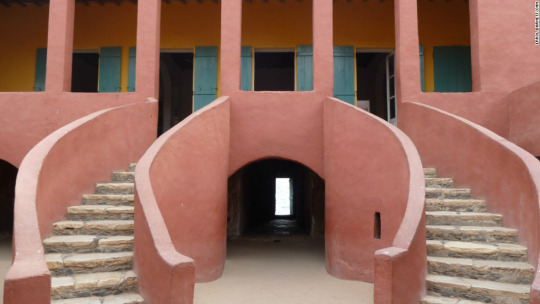
The House of Slaves and its Door of No Return is a museum and memorial to the Atlantic slave trade on Gorée Island, 3 km off the coast of the city of Dakar, Senegal. Its museum, which was opened in 1962 and curated until Boubacar Joseph Ndiaye's death in 2009, is said to memorialize the final exit point of the slaves from Africa.
While historians differ on how many African slaves were actually held in this building, as well as the relative importance of Gorée Island as a point on the Atlantic Slave Trade,visitors from Africa, Europe, and the Americas continue to make it an important place to remember the human toll of African slavery.
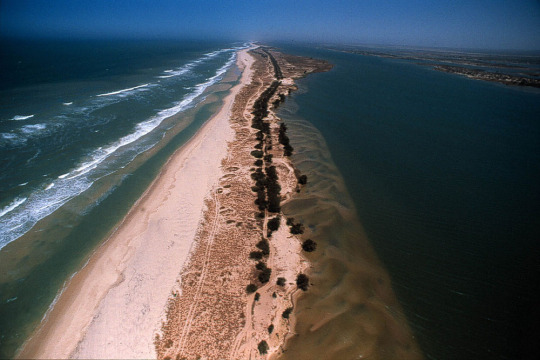
The Langue de Barbarie is a thin, sandy peninsula, adjacent to the Atlantic Ocean, located in western Senegal, in the neighborhood of the city of Saint-Louis. The peninsula separates the ocean from the final section of the Senegal River.

The Great Mosque of Touba is a mosque in Touba, Senegal. It was founded by Amadou Bamba in 1887 and completed in 1963. Bamba died in 1927 and is interred inside the mosque. Since his death the mosque is being controlled by his family.
Some interesting facts about Senegal
1. In the 16th century when the Portuguese visited the country’s coast, the fishermen said “sunu gaal”, which translates into “these are our boats”. The Portuguese, who understood nothing, simply named their land “Senegal”. Classic colonizers!!
2. Senegal’s location towards the west coast made it a hub for the international slave trade of the 18th and 19th century. Gorée Island, in particular, became a major transit point of the Atlantic Slave Trade.
3. In contemporary times, Senegal is very close to France. In fact, the very flag of Senegal has adopted the French Tricolor style. So the flags of both look the same, except for the color
4. Senegal is the only country in West Africa which wasn’t overrun by a military coup. Its democratic stability has earned it many allies in Europe and the Americas.
5. The common lingo of Senegal has a word called, “Teranga”. It has a very sweet and hospitable meaning and has become the identity of Senegalese people. It means helping a person to come to your land and settle down.
6. Dakar is home to the tallest statue in Africa. The African Renaissance Monument built in 2010, stands at an impressive 49 m, but still a meter short of a half-century.
7. Senegal is a paradise for footballers. Many prominent players like El Hadji Diouf, Henri Camara, Ferdinand Coly, Bouna Coundoul, etc. have been inducted into the European League from this country.
8. Senegal’s grasslands have given the country its two national symbols, the baobab tree, and the red lion.
Questions
1. Are you from Senegal or know someone from there?
2. Are you interested in learning Wolof?
3. What’s your favorite thing about Senegal?
4. Do you know anything about Senegal I forgot to mention?
5. Which country/Island do you think I should share about next?
PLEASE INFORM ME IF THERE IS ANY MISTAKE SO I CAN CORRECT IT. THANK YOU :)
*I know I said ISY project is about unknown/less talked about countries but I thought I should share about Senegal since I love it’s people and wanted to know more about their culture.
+ about ISY mini project
+ Previous ISY countries : VANUATU, KYRGYZSTAN .
#I SEE YOU#ISY mini project#SENEGAL#WOLOF#languages#langblr#languageblr#studyblr#history#geography#africa#countries#dakar
3 notes
·
View notes
Text
Anaya Riordan - 318; October 13, 1659
Jeremiah Wright - 302; May 6, 1675
Gracie Whitedove - 288; June 11, 1689
Bradford Ashby - 307; July 14, 1670
Elishena Cosgrove - 285; August 5, 1692
Steven Ashe - 300; March 15, 1677
Gynnie Erlanger - 289; September 3, 1688
Maxwell Knowels - 306; October 19, 1671
Freya Duvernay - 286; November 21, 1691
Wexler Mulligan - 308; December 6, 1669
Raina Pierson - 299; August 31, 1678
Aren Lincoln - 295; September 1, 1682
Karizmah Fertz - 238; April 20, 1739
Randolph Newman - 236; May 29, 1741
Stormy Nightingale - 273;
November 30,
Hunter Lyall - 279; June 5, 1698
Kylen Winters - 238; April 20, 1739
Myles Gunner - 236; September 15, 1741
Trista Klein - 270; October 9, 1707
Tomas Silini - 274; November 11, 1700
Karmah Sandoval - 238; April 20, 1739
Jaxxon Jones - 236; December 16, 1741
Clor Ullman - 269; January 23, 1708
Bastian Schwartz - 266; February 2, 1711
Kymmie Stewart - 238; April 20, 1739
Xxavier Mai - 236; March 9, 1741
Divastina James - 260 April 6, 1717
Troll Lomax - 263; May 21, 1714
Cristallè O'Malley - 255; June 19, 1722
Donovan Yearly - 259; July 10, 1718
Quavara Quinman - 253; August 18, 1724
Zimmer Andrews - 254; September 9, 1723
Hyvari Smith - 248; October 19, 1729
Luthor Bixby - 244; November 10, 1733
Strozolè Percival - 247; December 26, 1730
Petraeus Duvall - 246; January 3, 1731
Vestra Danvers - 241; February 17, 1736
Dawson Sullivan - 239; March 17, 1738
Iliana McCann - 233; April 30, 1744
Abraxas Tull - 231; May 31, 1746
Juniper Flowers - 230; June 9, 1747
0 notes
Photo
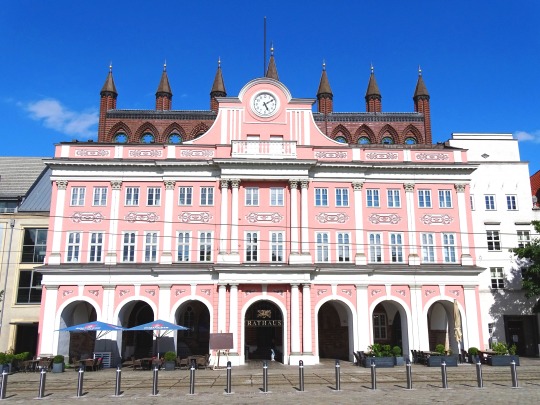
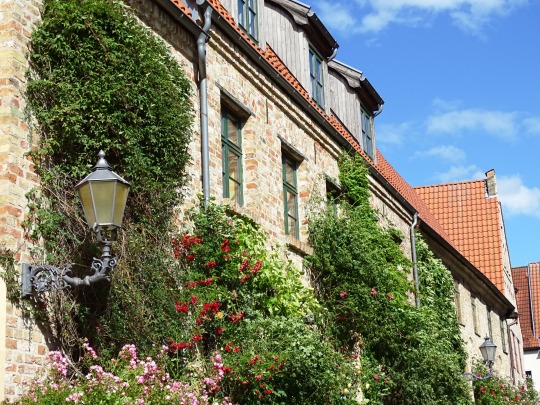
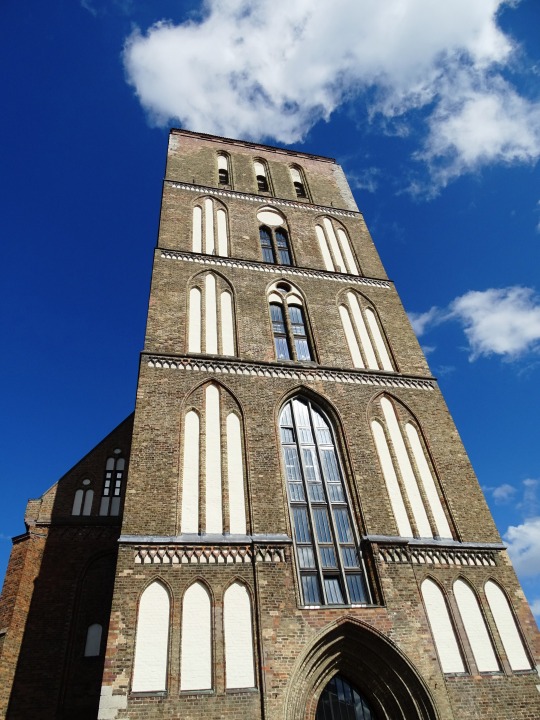

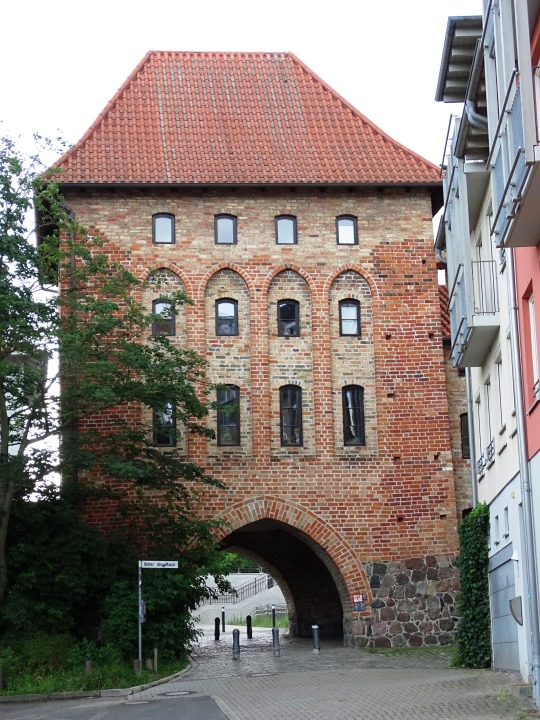


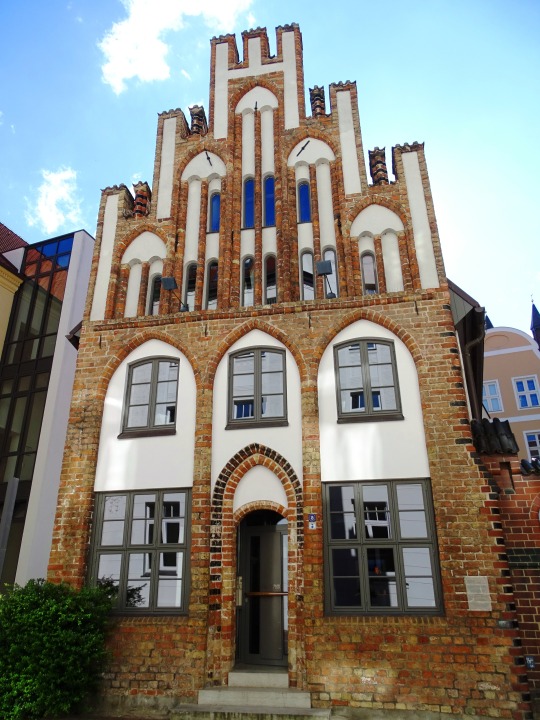


The Rostock fire of 1677 started on August 11, 1677.
#Rostocker Stadtbrand#Nikolaikirche#Kuhtor#Ständehaus Rostock#Stadtmauer#town fortification#Rostock fire of 1677#started#11 August 1677#anniversary#Germany#Rostock#Mecklenburg-Vorpommern#Deutschland#town hall#church#original photography#summer 2020#Europe#travel#vacation#cityscape#architecture#tourist attraction#landmark
0 notes
Photo

Jan Wyck - After the Combat -
oil on canvas, Height: 28 cm (11 in) Edit this at Wikidata; Width: 36 cm (14.1 in)
National Gallery of Ireland, Dublin, Ireland
Jan Wyck (also Jan Wiyck or Jan Wick) (29 October 1645 – 17 May 1702) was a Dutch baroque painter, best known for his works on military subjects. There are still over 150 of his works known to be in existence.
Jan Wyck was born on 29 October 1652, in Haarlem, then part of the Dutch Republic. The son of Thomas Wyck (1616-1677), also a Dutch painter, it is assumed that his father taught him to paint, although little is actually known of his early life. His father had spent much of the 1630s in Rome, refining an Italianate style, which can be seen in the works of both father and son. It appears likely that at a fairly young age he and his father moved to England during the reign of Charles II of England, possibly in 1664. It also seems likely that they were in London at the time of the Great Fire of London, as his father created one of the last sketches of Old St Paul's Cathedral in its ruined state before it was knocked down to create the new St Paul's Cathedral, as well as night scenes of the fire itself.
The first documented reference to Jan Wyck comes from the sessions of the London court of the Painter-Stainers' Company where, on 17 June 1674, he is recorded as promising to pay both his own and his father's quarterly fees. At this hearing he also promised to soon deliver his 'proofe piece'. However his father had returned to Haarlem within a year, and died less than two and a half years later on 19 August 1677.
Although the details of his first marriage are unknown, Jan Wyck was married for a second time on 22 November 1676 with his certificate stating: 'Jan Wick of St Paul's Covent Garden, gent., widower, about 31 ...'. The reference to him being a widower at the age of 24 indicates he was first married at a young age. His second wife was a 19-year-old English woman called Anne Skinner of St Martin-in-the-fields, and she bore him four children between 1678 and 1683, but none of them survived their early childhood.
Following the death of Anne in 1687, he remarried for the third time to a Dutch woman by the name of Elizabeth Holomberg in 1688. They moved into a new home in Mortlake, and between 1689 and 1693 they had two sons (John, b.1689 and William, b.1691) and a daughter (Elizabeth, b. 1693) together. His wife Elizabeth died giving birth to their daughter.
10 notes
·
View notes
Text
USA: NEW RELEASE: Mark Doyle Watching The Detectives: Guitar Noir III
For Promo or Download
Contact: [email protected]
Track Listings w/composer credit and track time:
1) DETECTIVES MEDLEY 5:05
a) Watching The Detectives (Costello)
b) Get Smart (Szathmary)
c) The Untouchables (Riddle)
2) KOJAK THEME (Goldenberg) 3:29
3) The MAN FROM U.N.C.L.E. (Goldsmith) 3:32
4) LOST LETTER (Previn) 3:23
5) JOHNNY STACCATO (Bernstein) 3:12
6) AMERICA DRINKS (Zappa) 5:25
7) THIRTEEN CRIMES (Doyle) 4:29
8) NOIR ALLEY (Doyle) 4:27
9) IT TAKES A THIEF (Grusin) 4:33
10) EVERYTIME (Cole) 3:11
Mark Doyle - guitars, keyboards, bass and drum programming
Josh Dekaney -drums and percussion
Ally Brown, Shelby Dems, Jonathan Hwang, and Joe Davoli -violins
Kate LaVerne - cello
Strings arranged and conducted by Mark Doyle
20 years after the release of the original critically-acclaimed Guitar Noir album in 1999, guitarist/arranger/producer Mark Doyle revisits the series with a tip of the fedora to the seedy underworld populated by detectives and spies. Doyle says, "Once I settled on the concept, I started hunting down any and all of the TV and movie themes having to do with detectives and spies, while trying to avoid obvious ones like "Peter Gunn," which has been done to death, and "Perry Mason," which I had already recorded on the first Guitar Noir album. I ended up choosing the themes that were most melodic and dramatic, since melody is to me the most important thing in an instrumental album. I uncovered some absolutely amazing music: Nelson Riddle's "The Untouchables," Elmer Bernstein's "Johnny Staccato" and Dave Grusin's "It Takes a Thief" are only three examples. When I ran out of things that moved me, I had to write two pieces that hopefully fulfill the criteria and stay true to the genre."
The album also contains two pieces outside of the concept - Frank Zappa's "America Drinks and Goes Home" (arranged as a ballad) and Louis Cole's "Everytime." These were the first two pieces recorded before the Detectives concept had been finalized, and Doyle felt that they were too strong to let go of.
Mark Doyle has had a distinguished career in the music business since his first band, Jukin’ Bone, was signed to RCA while Mark was in his late teens. He’s gone on to make records as guitarist or producer with David Werner, Cindy Bullens,Andy Pratt, Leo Sayer, Hall & Oates, Judy Collins, Meat Loaf, Bryan Adams, and Mary Fahl and has provided string arrangements for numerous recordings by the likes of New Kids On The Block, The Cavedogs, The Stylistics, andTiffany. He currently leads his own band, Mark Doyle & The Maniacs, who have released six albums and play consistently throughout the Northeast, and tours as Music Director/guitarist/pianist for former October Project singer Mary Fahl.
- Praise for Mark Doyle’s first Guitar Noir -
“Bridging the gap between soundtracks, jazz and rock is no easy task, yet in the hands of Mark Doyle & Co., the results are engaging and often spectacular.”
- Robert Silverstein, 20th Century Guitar
“Doyle lays down some nasty notes and tones. A gorgeous cover of “When I Fall In Love” shows him to be master of volume swells and sweet, stinging sustain.”
- John Heidt, Vintage Guitar
“By fearlessly venturing into musical territory that is surely foreign to many of his peers, Doyle has notched an impressive artistic achievement.”
- Russ Tarby, Syracuse New Times
- Praise for In Dreams: Guitar Noir II -
"It doesn’t get much better than this. A great idea and perfect execution make this the latest in a long line of fine instrumental albums from Doyle.
He produced the CD, played all the instruments, and came up with a great concept that works from the first track through cut 11." John Heidt, Vintage Guitar
Mark Doyle
Watching The Detectives: Guitar Noir III
(Free Will FW565)
Street Date: August 6, 2019
Mark Doyle - guitars, keyboards, bass and drum programming;
Josh Dekaney -drums and percussion ;
Ally Brown, Shelby Dems, Jonathan Hwang, and Joe Davoli -violins;
Kate LaVerne – cello;
Strings arranged and conducted by Mark Doyle
UPC Code: 193428748309
Available From: CD Baby, Amazon, iTunes
CD Release Events / Live Appearances
Leader: Mark Doyle
Billing: Mark Doyle's Guitar Noir
Date(s): November 2, 2019
Set Times: 8 and 9:30 PM
Venue(s): Auburn Public Theater
Venue Address w/cross streets: 8 Exchange St, Auburn, NY 13021
www.markdoyle.com
Media Contact
Jim Eigo
Jazz Promo Services
272 State Route 94 South #1
Warwick, NY 10990
Ph: 845-986-1677
[email protected]
https://ift.tt/1dvRi4z
"Specializing in Media Campaigns for the music community, artists, labels, venues and events.”
via Blogger https://ift.tt/2JdjVIr
0 notes
Text
În colecția de artă veche românească de la Muzeul Național de Artă al României se află un autoportret al lui Pârvu Mutu. Un fragment de frescă a fost decupat în anii ’60 ai veacului trecut din biserica de la Bordeşti (județul Vrancea) și păstrat pentru valoarea lui artistică la Muzeul Național de Artă din București. Aici vedem, practic, ce înfățișare avea marele pictor de biserici Pârvu Mutu, pentru că este evident un autoportret, lucru rar în epocă. Acest meșter, neîntrecut în epoca sa, care recent a fost trecut în calendarul ortodox spre cinstire ca sfânt, cu numele Cuviosul Pafnutie – Pârvu Zugravul (1), ni se înfățișează în autoportretul amintit drept un bărbat matur care ţine în mâna dreaptă o pensulă, iar în stânga o scoică utilizată pentru amestecarea culorilor. Instrumentele specifice meseriei sunt atribute care îi asigură recunoaşterea socială, într-o lume în care doar arareori pictorul se înfățișa pe sine. Pictura este realizată în anul 1699, când mentalitățile încep să se schimbe, iar breslele cunosc o dezvoltare deosebită în Țările Române.
Autoportretul lui Pârvu Mutu din biserica de la Bordeşti (județul Vrancea)
Un alt autoportret al lui Pârvu Mutu se găsește în biserica ctitorită de Cantacuzini la Filipeștii de Pădure.
Zugravul de biserici Pârvu Mutu s-a născut în Câmpulung și a trăit între anii 1657 și 1735. Anii de ucenicie i-a petrecut în Bucovina, după care, revenit în Țara Românească, a pictat mai multe ansambluri murale, mai ales pentru familia domnească a Cantacuzinilor. Printre cele mai importante se numără bisericile din Filipeștii de Pădure, Măgureni, Lespezi, Sinaia, Berca, Bordești, Colțea.
Apreciat de Cantacuzini, dar uitat în epocile următoare, Pârvu Mutu a fost redescoperit în anii dintre cele două războaie mondiale. Cartea Teodorei Voinescu, ”Pârvu Mutu Zugravu”(2) a fost cam singura monografie la îndemâna publicului larg multă vreme. În 1973 Pârvu Mutu devenea subiectul romanului ”Culorile sângelui” (1973) de Mihail Diaconescu. Desigur, cei interesați au avut și alte surse la îndemână, precum diversele istorii ale picturii din veacurile trecute. Recent(3), bibliografia referitoare la acest mare zugrav bisericesc s-a îmbogățit cu volumul ”Sfântul Cuvios Pafnutie – Pârvu Zugravul. Tradiție și modernitate în arta brâncovenească” de Elisabeta Negrău și Cristina Cojocaru.(3) Este un tom masiv, însoțit de elocvente ilustrații, tipărit în condiții grafice excelente, la Editura Cuvântul Vieții a Mitropoliei Munteniei și Dobrogei. În album se regăsesc fotografii ce reproduc fresce pictate de el. Între acestea: Mănăstirea ”Sfântul Nicolae” – Aninoasa, Muscel (Argeș) (4), Biserica ”Sfinții Trei Ierarhi” din Filipeștii de Pădure (Prahova) (5), Biserica ”Sfânta Treime” din Măgureni (Prahova) (6), unde se află un portret al zugravului și al soției sale, Biserica ”Sfânta Treime” a fostului schit Lespezi (Prahova) (7), Biserica ”Adormirea Maicii Domnului” din Sinaia (8), Biserica ”Sfântul Ierarh Nicolae” a Mănăstirii Mamu (Vâlcea) (9), Biserica Mănăstirii Berca (Buzău) (10) și Biserica Bordești (Vrancea) (11).
”Libertatea iconografică și stilistică, nemaiîntâlnită până atunci în spațiul muntean, conservator, pe care Pârvu Mutu a manifestat-o la Berca în compunerea unor scene ca Iisus predicând despre Judecată, Pilda celor zece fecioare sau Scara Sfântului Ioan Scărarul, precum și valențele portretistice ale tablourilor de familie ne indică un artist stăpân pe meșteșugul său, căutând să experiementeze forme de expresie noi, un autor care se raportează în mod inovator la canoanele tradiționale ale picurii”, se menționează în carte.
Autoarele au alcătuit biografia pictorului sintezând informațiile de primă sursă extrase din autobiografia arhimandritului Ghenadie Pârvulescu (1805 – 1873), un descendent al pictorului. Acesta a valorificat însemnările strămoșilor săi, între care și câteva lăsate chiar de marele zugrav.
Un lucru remarcabil la Pârvu Mutu sunt tablourile votive. În biserica monument de la Filipeștii de Pădure, celebrul zugrav a pictat în tabloul votiv nu mai puțin de 55 de membri ai familiei Cantacuzino.
________
(1) Proclamarea oficială a canonizării Sfântului Cuvios Pafnutie – Pârvu Zugravul a avut loc duminică, 6 august 2017, urmând ca Sfântul Cuvios Pafnutie să fie prăznuit anual în ziua de 7 august. (Cf. Creștin Ortodox.ro).
(2) București, Editura Meridiane, 1968.
(3) 2017.
(4) Ctitoria boierului Tudoran Vlădescu, 1677.
(5) Construită în anul 1688 de Aga Matei Cantacuzino și soția sa Bălașa Cantacuzino, biserica are plan triconc cu turlă pe naos si un pridvor poligonal încoronat de un foișor cu largi arcade pe coloane din cărămidă. Pictura murală interioară, valoroasă, a fost realizată de Pârvu Mutu în anul 1692. Construcția a fost restaurată în anii 1985 – 1986. (Wikipedia).
(6) Ridicată ca paraclis, pe latura de est a casei Cantacuzinilor din Măgureni, a fost pictată de Pârvu Mutu în 1694.
(7) Biserica a fost construită în anul 1661, de ctitorii Pârvu si Drăghici Cantacuzino și pictată de Pârvu Mutu între anii 1687-1693, în vremea lui Constantin Brâncoveanu, de către renumitul zugrav de biserici Pârvu Mutu.Se crede că aceasta este prima lucrare în frescă a lui Pârvu Mutu.
(8) Ctitorie cantacuzină, biserica mică a Mănăstiirii Sinaia a fost construită între 1690 – 1695.
(9) Ctitorie brâncovenească, bierica a fost sfințită la 1 august 1696, în al optulea an de domnie a lui Constantin Brâncoveanu.
(10) Ctitorie a vel stolnicului Mihalcea Candescu, împreună cu soția sa, Alexandrina, născută Cantacuzino, și cu fiii lor, Șerban, Mihalcea și Moise, mănăstirea Berca a fost terminată în 1694.
(11) Biserica din Bordești, construită inițial ca biserică de mănăstire, a fost ctitorită între anii 1698 – 1699 de căpitanul Mănăilă, dregător al domnitorului Constantin Brâncoveanu.
Emisiune consacrată Icoanei Sfintei Treimi de la Mănăstirea Sinaia, Trinitas TV, 2010
”Pârvu Mutu zugravul”, film documentar de Ion Bostan, 1965, click aici.
Vezi arhiva rubricii Memor de Daniela Șontică
”Pârvu Mutu, un pictor redescoperit în perioada interbelică” de Daniela Șontică În colecția de artă veche românească de la Muzeul Național de Artă al României se află un autoportret al lui…
#Aninoasa#artă plastică#Berca#Biserica Bordești (Vrancea)#Câmpulung Muscel#Cantacuzini#Constantin Brâncoveanu#cultură#Daniela Șontică#Filipeștii de Pădure#film#Mănăstirea Mamu#memor rubrica leviathan.ro#Mihail Diaconescu#Muscel#Pârvu Murtu#pictură#pictură religioasă#schit Lespezi#Sinaia
0 notes
Photo

Barbara Strozzi (6 August 1619 - 11 November 1677)
0 notes
Text
Manuscripts and Archives Items By Collection
The following is a list of the Manuscripts and Archives (MSSA) materials that HIST 115 students explored during a session on Tuesday, October 15th, 2019 in MSSA’s Gates classroom.
The boxes containing these items will be on hold in the MSSA reading room for students to use in completing the assignment given to them by Professor Tannenbaum. Here is information on finding our reading room in Sterling Memorial Library, our reading room hours, and instructions on registering (remember to bring your Yale ID the first time you visit). You do not need to request boxes in advance of your visit, since they will all be on CLASS HOLD for HIST 115.
Unlike the handout from the class, which organized the items into 10 teams, the following list organizes them by MSSA collection, so that students can request the correct box for the item(s) they’re interested in. Individual items used in class are flagged within each box.
MS 34 - Alsop Family Papers
Box 37, folder 418: Manuscript copy of the journal of Hannah Edwards Wetmore of Middletown, Connecticut, 1736-1739 [Team 6]
Box 37, folder 419: Articles of agreement regarding land distribution in Middletown, Connecticut, 7 September 1731 [Team 3]
MS 38 - Charles McLean Andrews Papers
Box 99, folder 1037: Insurance certificate of John Reynell for the voyage of the Two Brothers from Barbados to the Piscataqua River, 27 August 1762 [Team 10]
MS 55 - Baldwin Family Papers
Box 1, folder 1: Last will and testament of William Pitkin of Hartford, later manuscript copy, 27 September 1694 [Team 5]
Box 1, folder 2: Thomas Clap, Rector of Yale College, to Rev. Solomon Williams, 23 July 1740 [Team 1]
MS 181 - Miscellaneous Diaries Collection
Box 18, folder 116: Journal of Benjamin Woods (1691-1758) kept in Marlborough, Massachusetts, 1726-1730 [Team 9]
Box 20, folder 132: Diary of Peter Pratt, Yale College Class of 1762, as a student, 1760-1762 [Team 4]
MS 193 - Jacob Eliot Family Papers
Box 2, folder 22: Account book of Jacob Eliot, 1754-1785 [Team 1]
MS 282 - Hillhouse Family Papers
Box 1, folder 1: Paschal Nelson to his sister, 22 February 1723 [Team 4]
MS 352 - Miscellaneous Manuscripts Collection
Box 14, folder 270: Indenture between Thomas Clarke of Boston and James Brading of Boston, 20 September 1677 [Team 2]
Box 16, folder 302: Decision of an ecclesiastical council convened at Kensington, 6 November 1769 [Team 10]
Box 20, folder 384: Two letters from Joseph Dudley to Col. Winthrop Hilton, 19 January and 29 September 1707 [Team 5]
Box 23, folder 450: Letter of legal complaint from James Fitch to William Leete, 6 September 1676 [Team 1]
Box 48, folder 1109: Response of Timothy Ruggles to his censure by the Massachusetts House of Representatives, 1766 [Team 9]
Box 48, folder 1111: Letter from James Russell to John Fiske (with later transcription), 11 May 1702 [Team 8]
Box 48, folder 1112: An Almanack for the year 1687, with memoranda of occurrences on interleaves written by Rev. Noadiah Russell at Ipswich, Massachusetts, and later at Middletown, Connecticut, 1687 [Team 3]
MS 422 - Josiah Rogers Papers
Box 1, folder 1: Land deed regarding William Wheeler of Oronoke (Oronoque), Stratford, Connecticut, and signed by John Wheeler, 6 March 1693 [Team 4]
Box 1, folder 1: Declaration before the county court in Fairfield, Connecticut, 13 March 1693 [Team 6]
Box 1, folder 2: Land deed of John Rogers, 24 April 1702 [Team 7]:
MS 505 - Benjamin Trumbull Papers
Box 1, folder 3: An oration celebrating the Revnd Mr. Goodrich, late tutor of Yale College in New-Haven, 1756 [Team 7]
MS 552 - Nathan Whiting Papers
Box 1, folder 2: Letters from K. Brattle to Mary Saltonstall Clap, 24 November 1738 and 3 October 1739 [Team 10]
Box 1, folder 8: Rosewell Saltonstall to Mary Saltonstall, 4 August 1734 [Team 6]
Box 1, folder 13: Letters from Nathan Whiting (Amyntas) to Mary Saltonstall (Delia), 29 June & 17 August 1747 [Team 7]
MS 599 - Bromfield Family Papers
Box 1, folder 1: Letter from Daniel Allen to his sister Katherine Allen in Boston, 11 September 1711 [Team 3]
MS 864 - Curtis Family Papers
Box 1, folder 1: Bond of obligation of Edward Thomas and John Endicott of Boston, 17 December 1703 [Team 9]
MS 1169 - Robbins Family Papers
Box 1, folder 21: Diary of Philemon Robbins (1709-1781), 1730-1733 [Team 2]
MS 1257 - Valentine Family Papers
Box 1, folder 5: Marriage certificate of William Titus and Elizabeth Seamans, 18 September 1730 [Team 8]
RU 130 - Thomas Clap, President of Yale College, Records
Accession 1935-A-010, Box 1, folder 14: Thomas Clap, “Memoirs of some remarkable occurrences ...” and “Meditations on the death of my wife,” circa 1736 [Team 8]
RU 1081 - Ravi D. Goel Collection on Yale
Accession 2012-A-014, Box 1, folder 5: Indenture of an orphaned girl in Lebanon, Connecticut, 31 December 1744 [Team 2]
Local call number: *Y20 A11 1718
Henry Allyn (Yale College Class of 1721), manuscript notebook “Orders and appointments to be observed in the Collegiate School in Connecticut,” 1718 [Team 5]
0 notes
Photo

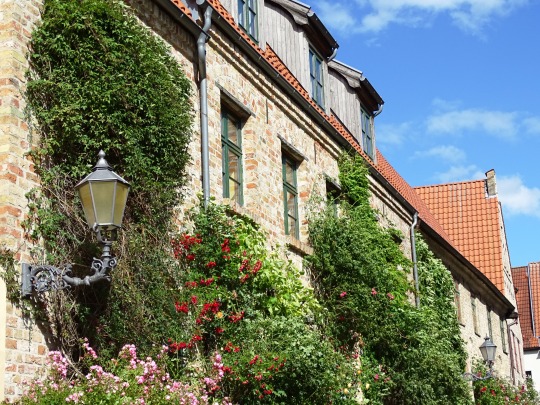
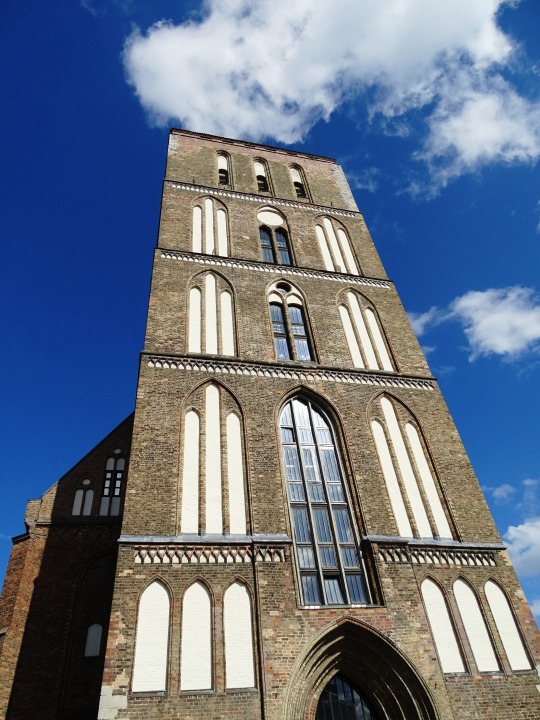
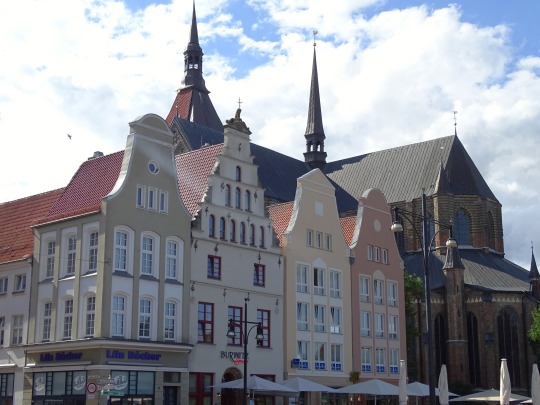
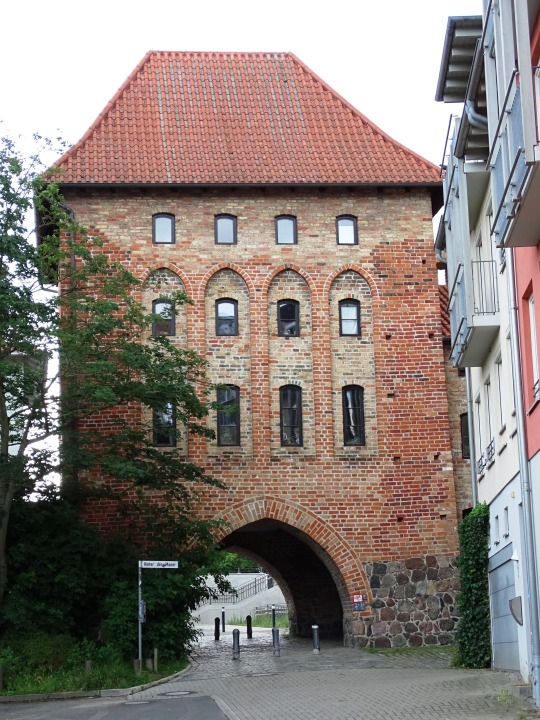




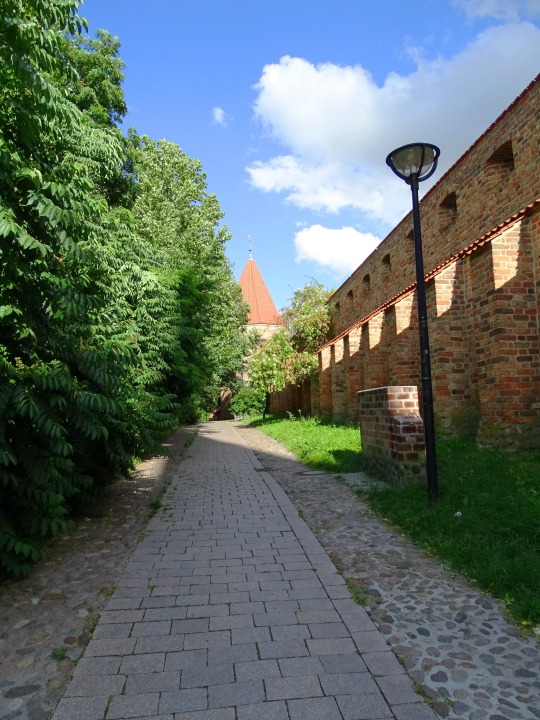
The Rostock fire of 1677 started on August 11, 1677.
#Rostock fire of 1677#started#11 August 1677#345th anniversary#travel#German history#Nikolaikirche#summer 2020#original photography#architecture#cityscape#tourist attraction#landmark#Germany#Deutschland#Mecklenburg-Western Pomerania#Mecklenburg-Vorpommern#Oberlandesgericht Rostock#City Hall#Neuer Markt#city fortification#Kuhtor
2 notes
·
View notes